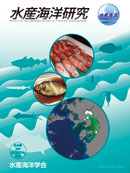Volume 84, Issue 3
Displaying 1-4 of 4 articles from this issue
- |<
- <
- 1
- >
- >|
Original Papers
-
2020Volume 84Issue 3 Pages 149-160
Published: August 25, 2020
Released on J-STAGE: March 17, 2022
Download PDF (7053K) -
2020Volume 84Issue 3 Pages 161-177
Published: August 25, 2020
Released on J-STAGE: March 17, 2022
Download PDF (2832K) -
2020Volume 84Issue 3 Pages 178-186
Published: August 25, 2020
Released on J-STAGE: March 17, 2022
Download PDF (1714K) -
2020Volume 84Issue 3 Pages 187-199
Published: August 25, 2020
Released on J-STAGE: March 17, 2022
Download PDF (1894K)
- |<
- <
- 1
- >
- >|
